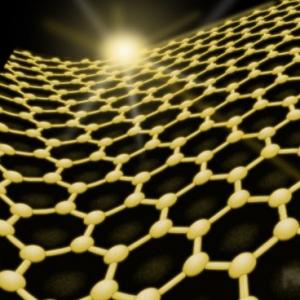MIT researchers develop a flexible graphene-based solar panel
Researchers from MIT developed a new solar (photovoltaic) cell that is made from several graphene sheets coated with nanowires. They say that this flexible and transparent cell could be made on the cheap.

The new solar panels use graphene as a replacement for ITO. The new electrode material is cheaper and provides several advantages over ITO: flexibility, low weight, mechanical strength and chemical robustness. The idea is to use a series of polymer coatings to modify the graphene properties, allowing them to bond a layer of zinc oxide nanowires to it, and then an overlay of a material that responds to light wavesâeither lead-sulfide quantum dots or a type of polymer called P3HT. Despite these modifications, graphene's innate properties remain intact.








